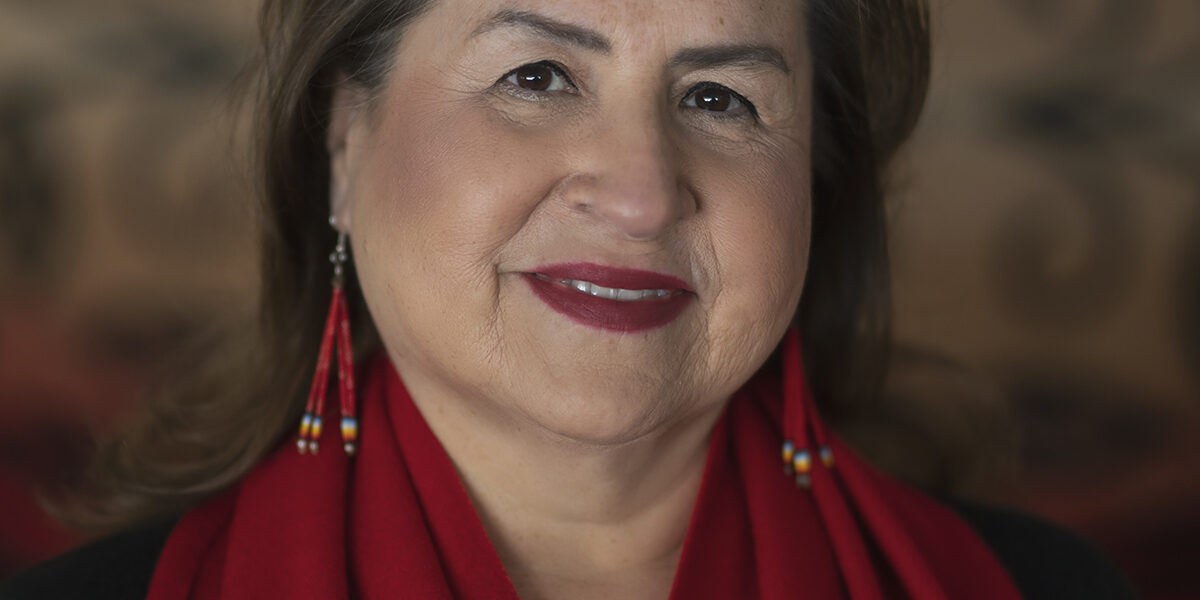The U.S. Department of Interior recently released a report surveying the impact of the federal
indian boarding school system over 150 years. This week University of Minnesota professor Brenda Child shares more of those boarding schools’ history and explains what it would take for a full reckoning with their legacy.
In May of 2022, Assistant Secretary of the Interior (for Indian Affairs) Bryan Newland reported
findings that confirmed the U.S. targeted American Indian, Alaskan Native, and Native Hawaiian
children with the federal boarding school system.
To learn more, we turn to a noted historian for their perspective.
“My name is Brenda Child. I am Red Lake Ojibwe, and I’m a professor of American Studies and
American Indian Studies at the University of Minnesota.”
The report looked at federally supported boarding schools over a wide time frame, from 1819 to 1969. Child said within that time frame were several different eras of boarding school policy with
different motivations.
“I always looked at that 50-year period, up into from Carlisle to FDR, as being the half-century
when the boarding school policy dominated in the United States. But it was also the same era
that the allotment policy dominated policymaking in the US. So you have to look at these two
systems as going hand in hand with one another,” said Child.
Child said the Carlisle School in Pennsylvania – which was the first government-run boarding
school and a template for others to come – was formed during the Indian Wars, and prisoners of
war were among its first students.
“The idea had kind of taken hold among policy makers – I mean, this is the underlying objective
of boarding schools – is that Native people aren’t going to really need a homeland anymore,
right? They’re going to enter the mainstream. They’re going to become citizens of the United
States. They’re going to speak English. My grandmother was trained as a domestic servant and
so they’re going to have great jobs like that. And they’re not going to need to live as tribal people
in their tribal communities. And so the idea was to kind of separate Native children from their
families,” said Child.
Child said that changed in the 1930s, during the Great Depression. For her book Boarding
School Season, she examined first-hand narratives from children, parents, and school officials.
While many American Indian students began attending public schools under the Roosevelt
administration, Child remarked that families insisted some boarding school remain… as a form
of poverty relief.
“I would say the number one reason Indian children ended up in boarding school was death of a
mother. And so you see that sometimes the networks on reservations or in our communities
were kind of collapsing in this era of high rates of tuberculosis and other disease, poverty,
dispossession, that a child might go to an auntie or go to several homes within the family before
they were sent to a government boarding school. And in the 1930s, people were making some
pretty desperate decisions for the survival of their children,” said Child.
At the same time, many children died from diseases at the boarding schools. The
report gave initial counts of 53 different schools with marked and unmarked burial sites.
Thinking towards accountability and what people can do to address this history, Child said
reconciliation must come in real estate.
“….It’s a very concrete way of recognizing the real damage that was done to Indian people at the
time. You know, there’s nothing we can do to kind of go back in time. There’s nothing we can do
about, you know, I’m not looking myself for apologies, that doesn’t go far enough. For me, I think
we need to talk to tribes about what they have lost in the boarding school era that could still be
returned to them,” said Child.
For more information on boarding school history, Child recommends the “Away from Home”
exhibit at the Heard Museum in Arizona, as well as reading American Indian memoirs, like
Charles Eastman’s biography From The Deep Woods to Civilization.
Feven Gerezgiher reporting for MN Native News.
Subscribe to Minnesota Native News in your favorite podcast app
- The Sugarbush Tradition Continues in Minnesota’s Urban Areas, and Khayman Goodsky’s New FilmANCHOR Marie Rock: This is Minnesota Native News, I’m Marie Rock. This week, we hear about Minnesotans continuing the old tradition of sugarbush in urban areas. Plus, a look at …
- Sherburne National Wildlife Refuge Faces Staffing Cuts; Headlines Affecting Indigenous MinnesotansANCHOR Marie Rock: This is Minnesota Native News, I’m Marie Rock. This week, we hear about the impact of recent federal staffing cuts on Zimmerman, Minnesota’s Sherburne National Wildlife Refuge. …


 Sequoia Hauck’s Gift for Decolonizing the Process of Art-Making
Sequoia Hauck’s Gift for Decolonizing the Process of Art-Making